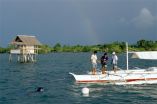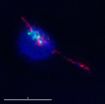INFORMATION:
Additional researchers on this project are Tonya King, associate professor of health evaluation science and Ian Paul, professor of pediatrics and public health science, both at Penn State; and Thomas Zalewski, professor of audiology, Bloomsburg University.
A grant from the Academic Pediatric Association/Maternal and Child Health Bureau Young Investigator Award funded this research.
Screening questions fail to identify teens at risk for hearing loss
2014-10-23
(Press-News.org) Subjective screening questions do not reliably identify teenagers who are at risk for hearing loss, according to researchers at Penn State College of Medicine. The results suggest that objective hearing tests should be refined for this age group to replace screening questions.
The American Academy of Pediatrics, in partnership with the Bright Futures children's health organization, sets standards for pediatric preventive care. The AAP recommends screening adolescents with subjective questions and then following up with objective hearing tests for those found to be at high risk of hearing loss. However, the screening questions were not specifically developed for children or adolescents. Studies also show that adolescents are poor self-reporters of hearing status.
"We found that you can't rely on the Bright Futures questions to select out teenagers at high risk for hearing loss who would warrant an objective screen," said Deepa Sekhar, M.D., M.Sc., assistant professor of pediatrics.
A study in 2010 using data from the National Health and Nutrition Examination Survey showed that one in five adolescents aged 12 to 19 has hearing loss. Most have high-frequency hearing loss, which may be related to increasing hazardous noise exposures from such things as personal listening devices, concert-going, ATV-riding and hunting with firearms.
For the study, eleventh grade students at Hershey High School -- located in the college's community -- answered the 10 Bright Futures hearing screening questions and additional questions assessing other potential risk factors for adolescent hearing loss. They also took the Pennsylvania state-mandated hearing test -- the familiar hearing screening where children raise their hand when they hear a tone -- and a hearing test developed by the researchers to better detect high-frequency noise-related hearing loss. Some of the children underwent additional standard hearing testing in a soundproof booth. The researchers report their results in the Journal of Medical Screening.
Neither the Bright Futures questions nor the additional questions were tailored specifically to adolescent hearing loss. In addition, the Pennsylvania school hearing test was found to have a sensitivity of 13 percent for adolescent hearing loss while the study-designed hearing test had 100 percent sensitivity.
"Although our test had more false positives, we caught 100 percent of the students with hearing loss," Sekhar said.
School hearing tests currently used in most states screen mainly for low-frequency hearing loss, which is seen more often in younger children in association with frequent ear infections and fluid in the ear. Sekhar's previous research showed that these tests often miss high-frequency hearing loss. She is working to develop an objective hearing screening test specifically for adolescents with more high-frequency tones above 3,000 Hertz. These tones are typically affected by hazardous noise exposure. A testing protocol that requires adolescents to fail twice instead of once will reduce false positives.
"The onset of high-frequency hearing loss is often very insidious and the symptoms are often very subtle," Sekhar said. "It's important to identify hearing problems at any age because of the impact it can have on all different areas of life, including academic success, workplace advancement and social relationships."
Students with mild hearing loss are more likely to repeat a grade, and it's estimated that people with hearing loss lose between $220,000 and $440,000 in earnings over a lifetime.
The study failed to find an association between typical adolescent noise exposures and hearing loss. The challenge in doing so may stem from the fact that genetics and duration of exposure are additional factors that affect an individual's risk of hearing loss.
"You could be listening at a lower volume for an extended period of time, and that can be as bad as a high-volume sound for a short period of time," Sekhar said.
ELSE PRESS RELEASES FROM THIS DATE:
A gut bacterium that attacks dengue and malaria pathogens and their mosquito vectors
2014-10-23
Just like those of humans, insect guts are full of microbes, and the microbiota can influence the insect's ability to transmit diseases. A study published on October 23rd in PLOS Pathogens reports that a bacterium isolated from the gut of an Aedes mosquito can reduce infection of mosquitoes by malaria parasites and dengue virus. The bacterium can also directly inhibit these pathogens in the test tube, and shorten the life span of the mosquitoes that transmit both diseases.
George Dimopoulos and colleagues from Johns Hopkins University, USA, had previously isolated Csp_P, ...
Highest altitude ice age human occupation documented in Peruvian Andes
2014-10-23
Orono, Maine — In the southern Peruvian Andes, an archaeological team led by researchers at the University of Maine has documented the highest altitude ice age human occupation anywhere in the world — nearly 4,500 meters above sea level (masl).
Their discoveries date high-altitude human habitation nearly a millennium earlier than previously documented.
Despite cold temperatures, high solar radiation and low oxygen conditions at that altitude, hunter-gatherers colonized the remote, treeless landscapes about 12,000 years ago during the terminal Pleistocene ...
TSRI chemists achieve new technique with profound implications for drug development
2014-10-23
LA JOLLA, CA – October 23, 2014 - Breaking carbon-hydrogen (C-H) bonds to alter existing molecules to create new ones is an increasingly important avenue for drug development. Of particular interest is mirror-image or "one-handed" compounds, but C-H breaking methods for making pure batches of these molecules have worked with only a limited range of starting materials.
Now a team from The Scripps Research Institute (TSRI) has established a new C-H activation technique that opens the door to creating a broader range of pure molecules of one-handedness or "chirality" ...
Gene identified for immune system reset after infection
2014-10-23
DURHAM, N.C. -- When pathogenic bacteria like Salmonella or Staphylococcus invade a host, the host organism should respond by going into a state of high alert, altering its metabolism to defend against the attack.
But if the host doesn't reverse course once the battle is won, its efforts will be wasted on defense rather than on repairing the damage done by bacterial invaders.
Duke University researchers have uncovered the genes that are normally activated during recovery from bacterial infection. The finding could lead to ways to jumpstart this recovery process and ...
New microscope collects dynamic images of the molecules that animate life
2014-10-23
Over the last decade, powerful new microscopes have dramatically sharpened biologists' focus on the molecules that animate and propel life. Now, a new imaging platform developed by Eric Betzig and colleagues at the Howard Hughes Medical Institute's Janelia Research Campus offers another leap forward for light microscopy. The new technology collects high-resolution images rapidly and minimizes damage to cells, meaning it can image the three-dimensional activity of molecules, cells, and embryos in fine detail over longer periods than was previously possible.
The developers ...
Top marine scientists call for action on 'invisible' fisheries
2014-10-23
To protect our oceans from irreversible harm, governments, conservationists, and researchers around the world must address the enormous threat posed by unregulated and destructive fisheries, say top marine scientists.
In an article published today in Science, Prof. Amanda Vincent of Project Seahorse at the University of British Columbia and Dr. Jean M. Harris of Ezemvelo KZN Wildlife in South Africa call for bold new approaches to the pressing global issue of overfishing and habitat destruction, including networks of marine protected areas, co-ordinated governance, and ...
Flu viruses disguised as waste
2014-10-23
This news release is available in German. Viral infections always follow a similar course. The pathogen infiltrates the host cells and uses their replication and protein production machinery to multiply. The virus has to overcome the initial barrier by docking on the surface of the cell membrane. The cell engulfs the virus in a bubble and transports it towards the cell nucleus. During this journey, the solution inside the bubble becomes increasingly acidic. The acidic pH value is ultimately what causes the virus's outer shell to melt into the membrane of the bubble.
Capsid ...
Genetic causes underlying the disqualification of 2 elite American Standardbred pacers
2014-10-23
A DNA mutation that can lead to horses being genetically male, but female in appearance, may explain at least two cases of controversial sexual identity, according to research led by professors from the Texas A&M College of Veterinary Medicine & Biomedical Sciences (CVM) and published in PLOS Genetics.
This type of genetic abnormality is caused by a mutation called DNA copy number variation (CNV), in which there are deletions and duplications in the genome typically larger than 50 base pairs.
These variations are one way that individuals of the same species are genetically ...
Cutting the ties that bind
2014-10-23
Kansas City, MO. — The development of a new organism from the joining of two single cells is a carefully orchestrated endeavor. But even before sperm meets egg, an equally elaborate set of choreographed steps must occur to ensure successful sexual reproduction. Those steps, known as reproductive cell division or meiosis, split the original number of chromosomes in half so that offspring will inherit half their genetic material from one parent and half from the other.
During meiosis, each set of homologous chromosomes pair up in a kind of chromosomal square dance, ...
Scientists uncover how protein ensures reproductive success
2014-10-23
An international team of researchers from Japan and the UK has discovered how a single protein, called PP4, oversees the processing of DNA during sperm and egg generation for successful fertilization. This protein's activity becomes even more paramount during aging. The study, published in the journal PLOS Genetics, may one day help scientists to understand the mechanisms underlying age-related fertility declines in humans.
While a typical adult human cell contains 46 DNA strands, or chromosomes, that carry our complete genetic information, reproductive cells such as ...




